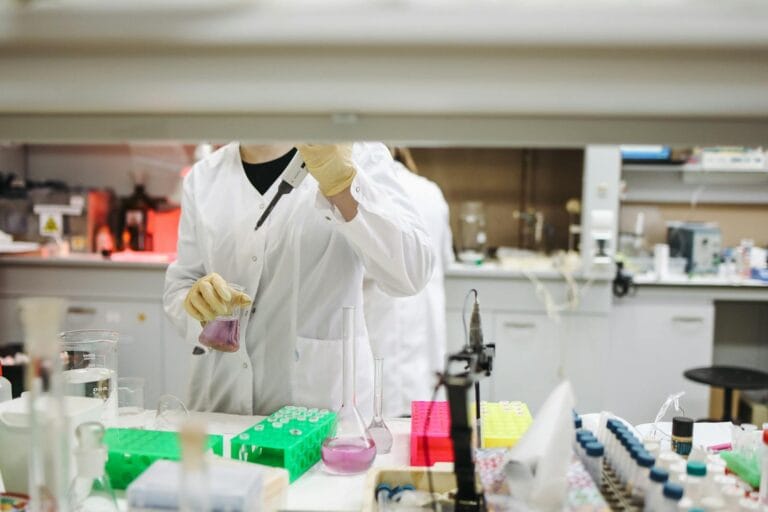
Beware of Carcinogenic Nitrosamine Compounds as Contaminants in Medicinal Products

- How Do Nitrosamines Form in Drug Products?
- Factors Causing Nitrosamine Contamination
- Nitrosamine Evaluation Guidelines Based on FDA Recommendations
According to reports from the Food and Drug Administration (FDA), nitrosamine impurities exceeding the acceptable daily intake limits have been detected in several medicinal products. These impurities have been found in losartan and valsartan, which are used to treat hypertension; metformin, used for managing diabetes; ranitidine, used for treating peptic ulcers; the antibiotic rifampin; and varenicline, used to aid smoking cessation. The presence of nitrosamine levels exceeding the daily intake limit is known to increase the risk of cancer.
How Do Nitrosamines Form in Drug Products?
Structurally, nitrosamine compounds contain a nitroso group (-NO) bound to an amine group (NR₂). This group of compounds can be formed through nitrosation reactions between secondary, tertiary, or quaternary amines and nitrous acid. Some nitrosamine compounds commonly found in active pharmaceutical ingredients include:
- N-nitrosodimethylamine (NDMA)
- N-nitrosodiethylamine (NDEA)
- N-nitrosomethylphenylamine (NMPA)
- N-nitrosodiisopropylamine (NDIPA)
- N-nitrosoisophenylethylamine (NIPEA)
- N-nitrosodibutylamine (NDBA)
- N-nitroso-N-methyl-4-aminobutyric acid (NMBA)
The occurrence of nitrosamine impurities in medicinal products is not limited to specific drugs but can potentially arise in various pharmaceuticals if the manufacturing process or materials used allow for the formation of nitrosamines.
Factors Causing Nitrosamine Contamination

One example of a source of nitrosamine impurities in medicinal products is the use of amide-based solvents such as N,N-dimethylformamide (DMF). Under certain conditions, such as elevated temperatures and prolonged reaction times, this solvent can degrade into secondary amines, specifically dimethylamine which may react with nitrous acid to form NDMA. In this context, it is crucial for manufacturers to carefully evaluate any materials containing amine groups as an early detection measure for potential nitrosamine formation in pharmaceutical products.
Nitrous acid, a key precursor in nitrosamine formation, can originate from sodium nitrite impurities present in active ingredients or excipients. This formation occurs under acidic conditions through an ion-exchange reaction between nitrite salts and acidic compounds, resulting in the production of nitrous acid. Besides raw materials, nitrite can also come from the water used in manufacturing processes, as well as from packaging or pharmaceutical production equipment.
Nitrosamine Evaluation Guidelines Based on FDA Recommendations
According to recommendations from the FDA, drug manufacturers must evaluate active pharmaceutical ingredients (APIs) and drug products that have a high potential for nitrosamine contamination. This evaluation should take into account factors such as the maximum daily dose, duration of drug consumption, the indication of the drug, and the number of patients using it. The FDA also provides recommended acceptable daily intake limits for nitrosamines based on the Predicted Carcinogenic Potency Categorization Approach (CPCA).
This approach is used to estimate the carcinogenic potential of nitrosamines based on their chemical structure when direct toxicological or carcinogenicity data from animal or human studies are not available. In addition to the CPCA method, the FDA also offers recommendations based on existing carcinogenicity and mutagenicity data for specific nitrosamine compounds. However, it is important to note that acceptable daily intake limits may vary between different nitrosamine compounds, as not all nitrosamines exhibit the same level of carcinogenicity.
Ensure every drug product you produce is free from nitrosamine contamination, which can be harmful to consumer health. Conduct thorough laboratory testing of your drug product formulations to detect potential contamination early. With proper laboratory testing, you can maintain the quality, safety, and credibility of the pharmaceutical products you develop.
Author: Safira
Editor: Sabilla Reza
References:
U.S. Food and Drug Administration. (2020). Control of nitrosamine impurities in human drugs: Guidance for industry (FDA Guidance No. 141720). https://www.fda.gov/media/141720/download.
U.S. Food and Drug Administration. (2024). Information about nitrosamine impurities in medications. FDA. https://www.fda.gov/drugs/drug-safety-and-availability/information-about-nitrosamine-impurities-medications.
U.S. Food and Drug Administration. (2024). CDER: Nitrosamine impurity acceptable intake limits. FDA. https://www.fda.gov/regulatory-information/search-fda-guidance-documents/cder-nitrosamine-impurity-acceptable-intake-limits.



